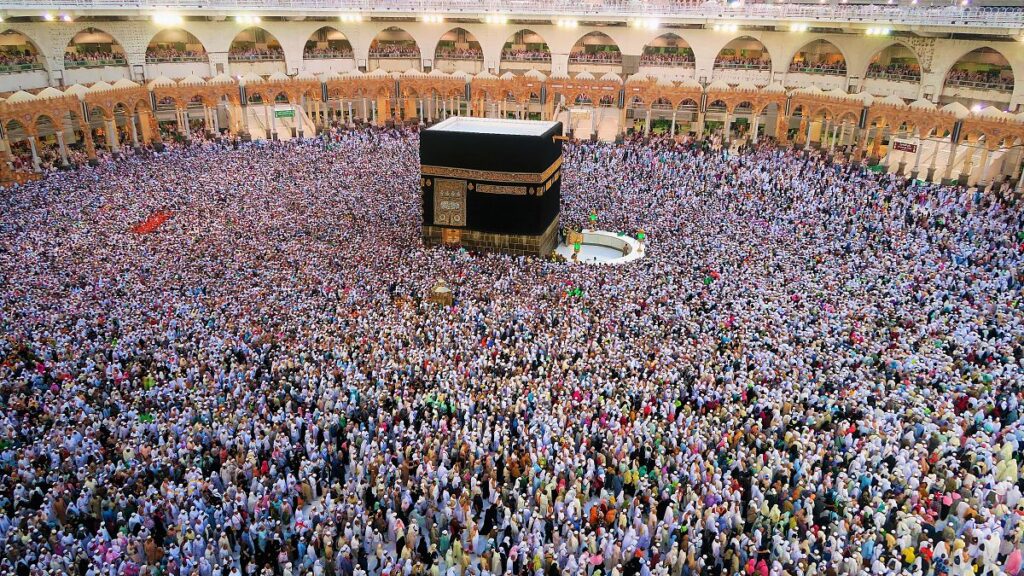More than 1.5 million foreign pilgrims are in Saudi Arabia for this year’s Hajj.
The five-day rite that every Muslim must perform once in their lifetime is an awe-inspiring spiritual experience.
But it is also physically gruelling. Pilgrims walk for hours and wait in huge crowds around holy sites and the surrounding desert.
The country has spent billions of dollars on crowd control and safety measures, but one of the greatest challenges at the Hajj in recent years has been the heat.
Pilgrims are currently gathering at Mount Arafat amid temperatures nudging 40 degrees Celsius – which are expected to reach as high as 45C in the coming days.
After 1,300 people died from extreme heat and overcrowding last year, Saudi Arabia has installed over 400 cooling units and curbed unregistered pilgrims.
If you’re planning on joining the Hajj pilgrimage for the first time, packing the right clothing and useful items is essential.
To be prepared both for the religious regulations and the practical challenges, here are what veteran hajjis – as those who have completed the pilgrimage are known – recommend packing.
What to wear on a Hajj pilgrimage
The annual pilgrimage to Mecca, the holiest city for Muslims, can often fall during one of the hottest periods of the year.
The rite, which began on 4 June this year, will see pilgrims navigating desert climates of over 40 degrees Celsius during the day.
The majority of rituals take place outdoors in the desert, including climbing the Mount of Mercy and stoning the Jamarat, a row of pillars representing the devil.
To avoid heatstroke, sun hats are key. Pilgrims often opt for wide-brimmed straw hats or even cowboy hats.
Alternatively, many bring umbrellas or balance their prayer mats on their heads.
All men are required to wear simple white robes without any stitching, a rule aimed at uniting rich and poor.
Women must cover their hair but have more freedom to wear fabrics from their native countries, resulting in a colourful display of Islam’s multiculturalism.
When it comes to footwear, it’s best to wear something that’s durable for the long walks but that also slips on and off easily, as pilgrims must remove their shoes before entering Mecca’s Grand Mosque.
Sandals are sensible, but some pilgrims say it’s best also to wear socks as the mosque’s marble floor can be surprisingly cold as they walk around the Kaaba seven times.
What to bring on a Hajj pilgrimage
A daypack of some kind is essential for carrying food, water, sunscreen and toiletries. But backpacks can be a hassle when you’re crammed shoulder-to-shoulder.
Far more popular are cross-body bags that you can access without turning around.
Many pilgrims also carry a separate drawstring bag or pouch for their shoes. Usually at mosques, you can leave your shoes with an attendant at the entrance.
But with hundreds of thousands of people flocking to the Grand Mosque, it’s easy to lose your shoes and spend a long time trying to locate them.
Some pilgrims, like Umaima Hafez, a five-time hajjah from Egypt, pack a portable plastic stool. It fits in her bag and makes the hours-long waits more manageable.
When it comes to toiletries, make sure you bring only those that are fragrance-free to comply with the prohibition on perfume.
Be prepared to camp out
With holy sites spread over a distance of more than 16 kilometres, pilgrims may also need to camp out in the desert. It could mean staying somewhere like Mina – one of the world’s largest tent camps.
There are places you can purchase camping equipment in Mecca. Supermarkets often sell essentials like lightweight tents, sleeping mats and collapsible water pouches.
For food, it’s sensible to bring anything that can be consumed easily on the move and doesn’t need refrigeration or utensils, such as dried fruit, nuts, biscuits and crisps.
Read the full article here


